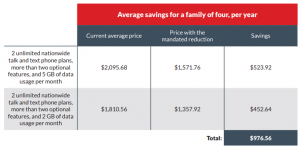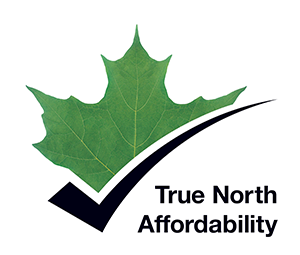Keeping to the platform
A few weeks ago, I wrote a piece called “How long is a piece of string?”, discussing the challenge of defining the price of a mobile service plan. Year over year comparisons are difficult because data usage increases so dramatically and service providers try to design new packages to meet the demand.
So, a question arose on how to measure achievement of a key element in the Minister’s new mandate, requiring him to “Use all available instruments, including the advancement of the 2019 Telecom Policy Directive, to reduce the average cost of cellular phone bills in Canada by 25 per cent.”
 As it turns out, there was clarity to be found in the Liberal party’s platform, that set out 2 specific plans and promised a 25% savings within 2 years:
As it turns out, there was clarity to be found in the Liberal party’s platform, that set out 2 specific plans and promised a 25% savings within 2 years:
- 2 unlimited nationwide talk and text phone plans, more than two optional features, and 5 GB of data usage per month; and,
- 2 unlimited nationwide talk and text phone plans, more than two optional features, and 2 GB of data usage per month.
The platform priced these out and promised specific savings. The two plans with 5GB per month were said to cost $2,095.68 at the time, and the platform promised to reduce the bill to $1,571.76 for savings of $523.92 per year. The two plans with 2GB were said to cost $1,810.56, promised to drop to $1,357.92 for savings of $452.64. All told, this hypothetical family of 4 would have their annual $3900 phone bill drop by just under $1000 for a total of about $2930.

TELUS decided to test its plans and found that it now offers plans that already meet what it is calling a “True North Affordability” standard.
According to TELUS, the Platform scenario could be delivered with all 4 hypothetical customers each subscribing to TELUS 10 GB Peace of Mind plans, for a total of $2880. The family would save about $50 more than promised, and would receive 2 to 5 times the amount data specified in the Liberal party’s platform promise.
It is clear that Canada’s mobile marketplace has moved faster than anyone in Ottawa could have anticipated. But that doesn’t mean the goal posts should continually be moved.
At a time when service providers are beginning to make the massive capital investments associated with the next generation of technology, regulators and policy makers alike need to be concerned about the unintended consequences of intervening in the market. As the Competition Bureau noted in its conclusion to its November CRTC submission, “competition has not yet reached its full potential and a mandated MVNO policy applied broadly risks undermining the steps taken by wireless disruptors, without much certainty that the MVNO policy will significantly decrease pricing.”
The Competition Bureau is concerned that the regional mobile competitors, the “disruptors” that have acted as catalysts in the marketplace, will be disproportionately harmed by regulatory intervention.
As I wrote earlier this week, we should be talking more seriously about providing direct assistance to those disadvantaged households who really need help accessing affordable wireless technology and services.

 But the question of mandating MVNOs is indeed on the agenda.
But the question of mandating MVNOs is indeed on the agenda.